The elements of design & sustainability
Oct 08, 2021 | Tahera Tamanna
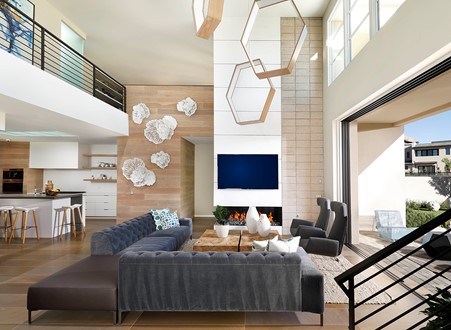 When making sustainable choices and creating environmentally friendly designs, it's important to understand the fundamental of the subjects.
When making sustainable choices and creating environmentally friendly designs, it's important to understand the fundamental of the subjects. Creating a sustainable interior design, it’s not just about thinking of the material you use and reducing air pollution, but according to an article written by Christele Harrouk, the space occupied by us has a significant role in our psychology behaviour. Meaning that when designing, we should be considered of the social and psychological needs of the resident.
So, let’s dive in to some of the elements of interior designs and how to apply sustainability on them.
THE ELEMENTS OF DESIGNS:
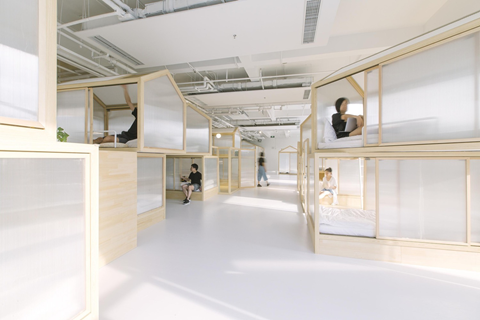
SPACE
The concept of space is the area within a room, which is determined by the boundaries of the room and provides you with the subject area you must work with. Therefore, your input to any space will bring together all the design elements and affect how the space will feel when the design is finished.
Based on Christele Harrouk’s article, “Having a direct impact on your subconscious, contributing to your emotions and perceptions, through... part of your brain that reacts to …the space you occupy, interior design became an inherent part of people’s psychology” (Harrouk, C., 2020), which suggests how significant a space is when designing.
Would it be cosy and warm? Will it be airy and light? Will it be green and sustainable?
When choosing a space, you should examine principles such as functionality, accessibility, and aesthetics with a focus on people and planet as you design a sustainable interior design.
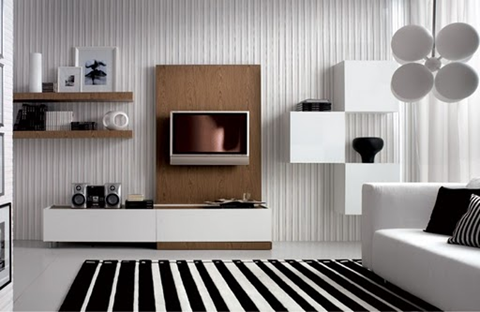
LINE
Lines define a space and create a sense of direction and feeling of a design, they can lead the eye, outline an object, divide a space and communicate a feeling or emotions: for example, a delicate, smooth line appears serene and soothing, on the other hand a bold, frantic line can appear anger or energy. Or a horizontal line can suggest a feeling of rest, repose or a sense of space, while a vertical line communicate a sense of height.
When it comes to vertical lines, we can use these to give the illusion of making a room seem taller than it actually is, while suggesting a feeling of strength, dignity and height. Vertical lines should be used to reduce unnecessary height in a space.
On the other hand, horizontal lines do the opposite: they widen a narrow space, giving feelings of stability, grounding, emphasis and direction. Moreover, they can also be used to direct the viewer to a particular focal point based on their preferences.
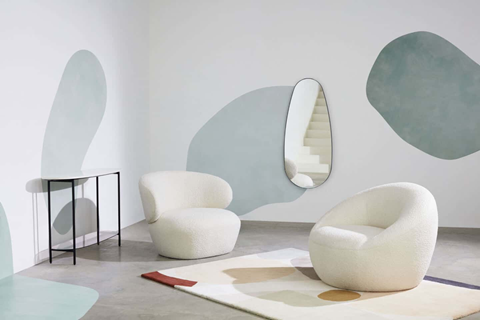
SHAPE
To explore shapes, we first have to consider structures. Structures enclose rooms and spaces that are the basis for your design application. They can present opportunities but also limitations to what can be achieved in an interior.
Firstly, you must evaluate the structure and its attributes. Your evaluation of any structure involves observation and questioning each structure in the space. It’s important that you also give consideration to the shape you introduce into a space because they can make a real difference to the atmosphere that you will be creating.
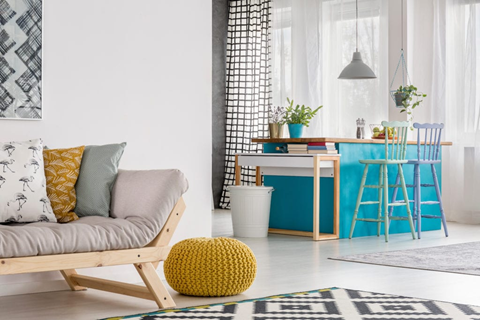
COLOUR
Colour is the fun part of the design that everyone wants to play with. Every colour creates different emotions and feelings: they can make us feel happy or sad and they can make us feel hungry or relaxed. Therefore, we should be aiming to incorporating colour into our interiors that positively affects our indoor.
For example, the colour green, is said to have a calmer effect on the surroundings. It gives a relaxed mode. By keeping plants in your rooms, not only the plant's ring in freshness but also the colours of the leaves have a positive impact on the family members.
However, as stated in an article by Foyr, that based on numerous studies of the Psychology of Colours, each person will react in different ways to each colour. Therefore, it’s advisable to choose colour schemes based on the client’s personality and desires, so they are able to feel comfortable and relaxed in their house. (Create Beautiful 3D Designs, 2021)
Furthermore, to save energy a lot can be done just by picking the right colours. Light colours reflect more lights, while rooms with darker walls and furnishing need more artificial lighting. Using reflective surfaces increases the amount of light in a room by bouncing it around, decreasing dependency on artificial lighting. (brand, E., 2017)
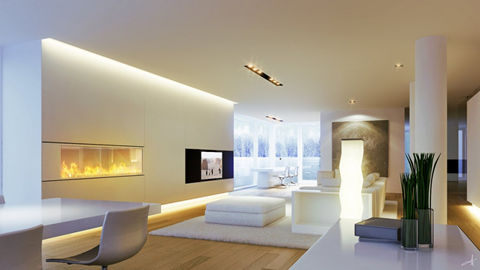
LIGHT
As a designer, you usually have both natural and artificial light to consider and manipulate. When choosing a space, you must first assess how much natural light is in a space. The availability of natural light in a space is one of the starting points that guides and constrains many fundamental design decisions. For example, what is the orientation of the walls with windows? Does the space have north, south, east, or western light?
Taking advantage of natural resources in the built environment is an important tool in attaining sustainability. The generation of the electricity can affect the environment such as emission of greenhouse gases and other air pollutants. Artificial lighting can account for up to 15% of a building's annual electricity use.
When designing artificial lighting, on the other hand, sections of lighting should be on separate controls, so users of a space can decide how much light is needed, and ambient light can be reduced elsewhere. In addition, occupancy sensors that automatically turn lights on and off as needed can reduce use while having a minimal impact on building occupants.
As Nancy Clanton, CEO of Clanton & Associates, advices, “Don’t design for energy savings; design well, and the result will be incredible energy savings”!
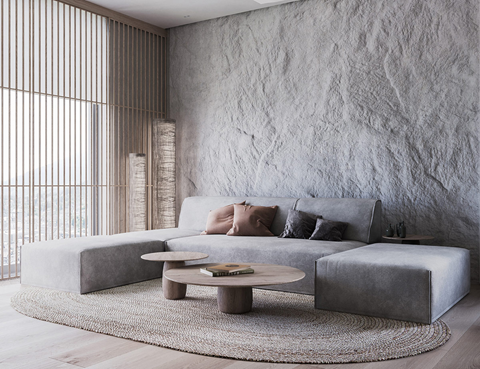
TEXTURE
Texture in design can be described as an artist’s stroke or paint, so the choices in materials made have a huge impact mood and implied use of the space.
For example, furniture and accessories made from artisans are very textural, so you can feel the products because they use fabrics, wood and stones. This adds physical comfort and visual interest.
According to Biophilic Moodboards, remembering outdoors, natural textures, which are preferred in biophilic design, can also benefit human wellbeing. This is because texture which stimulates touch, causes a strong emotional response which goes directly to the brain and a result, this is able to reduce stress and increase concentration. The same article, also mentions that it is also particularly useful because texture is interesting to watch, which stimulates another one of our senses. (DforDesign, S., 2019)
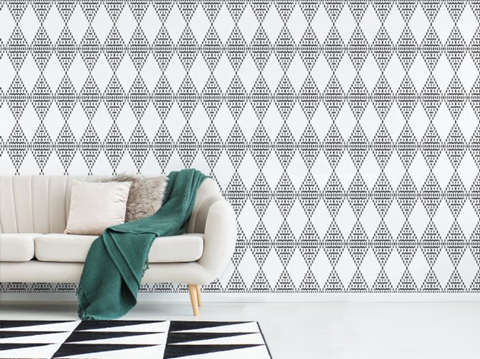
CONCLUSION
To conclude, apart from designing for the aesthetics, it is important for designers to apply sustainability into the elements of design in interior designing.
Designers should design with humans in minds, their needs, their feelings, and how they might adapt into the space in the future, as well as how it might affect the environment.
Here at Rural Handmade, we are sustainable development goal focused company where we are aligned to make this world a better place. We help rural artisan communities connect to the global entrepreneurs to help build a sustainable brand.
REFERENCE
- Harrouk, C. (2020). Psychology of Space: How Interiors Impact our Behavior? [online] ArchDaily. Available at: https://www.archdaily.com/936027/psychology-of-space-how-interiors-impact-our-behavior.
- Create Beautiful 3D Designs. (2021). The Psychology of Colors in Interior Design | Foyr. [online] Available at: https://foyr.com/learn/psychology-of-colors-in-interior-design/.
- brand, E. (2017). 5 Principles of Sustainable Interior Design. [online] Medium. Available at: https://econyl.medium.com/5-principles-of-sustainable-interior-design-b390503a5176.
- DforDesign, S. - (2019). Biophilic & Sustainable Interior Design · Biophilic Moodboards: Natural textures · DforDesign. [online] DforDesign. Available at: https://dfordesign.style/blog/biophilic-moodboards-natural-textures [Accessed 30 Sep. 2021].
- The New & Reclaimed Flooring Company. (2019). Natural Patterns: How they affect us in any interior. [online] Available at: https://www.reclaimedflooringco.com/natural-patterns-how-they-affect-us-in-any-interior/ [Accessed 30 Sep. 2021].
Recommended








